
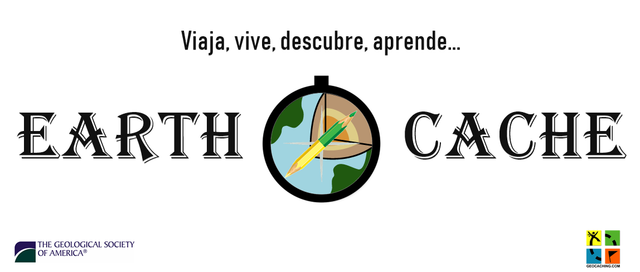
¿Dónde está? ¿Qué estoy buscando?
Empecemos por lo más sencillo. Este no es el único fósil que puedes encontrar en Granada. La ciudad es una auténtica delicia en todos los sentidos. Geológicamente también y son muchos los fósiles que podéis encontrar aquí.
¿Qué cómo los encuentras? Pues una buena forma de empezar... ¡Es mirar por donde pisas!
¿Qué es un fósil?
Los fósiles son restos orgánicos de plantas o animales que vivieron aquí hace millones de años. Estos restos de organismos de épocas pasadas tienden a conservarse adheridos a rocas sedimentarias y nos muestran cómo eran los habitantes de la Tierra hace millones de años e incluso cuáles eran sus costumbres gracias a los fósiles en los que se ha dejado grabado el rastro de actividad en ellos.
¿Cómo se forman?
Existen distintas posibilidades:
- Sedimentación. Cuando un animal o un insecto muere los sedimentos acaban enterrando sus restos, especialmente su exoesqueleto, que es lo más resistente al tiempo. Para que este exoesqueleto se conserve sin modificaciones a lo largo de millones de años será menester que la sedimentación se produzca lo antes posible.
- Fundición. Esta forma de fosilización origina sobre todo moldes de impresiones en negativo de los organismos. Estas impresiones pueden ser exteriores o interiores y sobre todo han conservado conchas de distintos animales hasta nuestros días.
- Mineralización. El agua también puede conservar un cuerpo, para ello lo ideal sería que el ser vivo al morir se precipitara al agua o desfalleciera ya en ella. Muchos de los organismos habitantes en el agua pueden comerse las partes exteriores del cuerpo pero no el duro esqueleto.
- Carbonización. La vida se basa en carbono, por lo que esta también es una forma de fosilización. Las sustancias volátiles como el oxígeno y el hidrógeno que acumulan los cuerpos de los seres vivos se pierden y perdura una capa de carbono que será la encargada de conservar los restos del organismo en forma de huella.
¿Qué tipos de fósiles existen?
Partimos de la base inicial de que los fósiles son restos de organismos; animales o plantas que perduran en el espacio tiempo. Pero podemos distinguir dos tipos de fósiles:
- Fósiles de individuo o Fósil. Son aquellos formados por un animal o planta. En la mayoría de los casos no estarán constituidos por un organismo entero, sino que es una parte de este la que ha sido fosilizada, como puede ser un hueso, hoja, la mandíbula o la piel.
- Fósiles de actividad o Icnofósil. Se trata del rastro de la actividad que han dejado los seres vivos y se ha mantenido hasta la actualidad en forma de huellas o nidos impresas en diferentes moldes, por lo que se tratan de fósiles de fundición.
Algunos ejemplos:

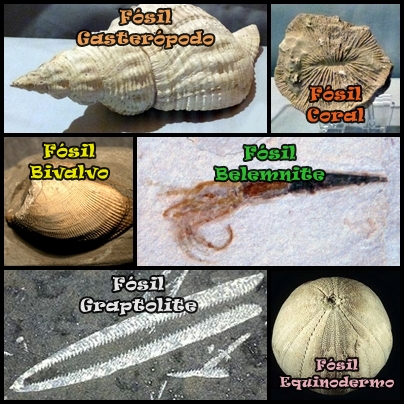
¿Puedo encontrar más en Granada?
Por supuesto, es casi lo primero que te hemos dicho. Hemos elegido este ejemplar porque es el más grande y visible de todos. Pero existen otros muchos lugares donde observar fósiles por aquí cerca. Algunos forman parte de Earthcaches. Y otros no.
Por el momento la única otra ficha creadas es: https://www.geocaching.com/geocache/GC77E8W
Pese a esto hay fósiles por toda la ciudad. Lo prometemos. .
Si con esto no es suficiente para ti, puedes encontrar algunos fósiles más en los siguientes lugares:
- En la pared del convento Carmelitas, situado en la calle Martinez de la Rosa, podrás apreciar unas pequeñas manchas de otro color distinto al de la pared. Acércate más. ¡Sí, son ammonites!
- En las escaleras de la Catedral, también encontramos ejemplares de este fósil.
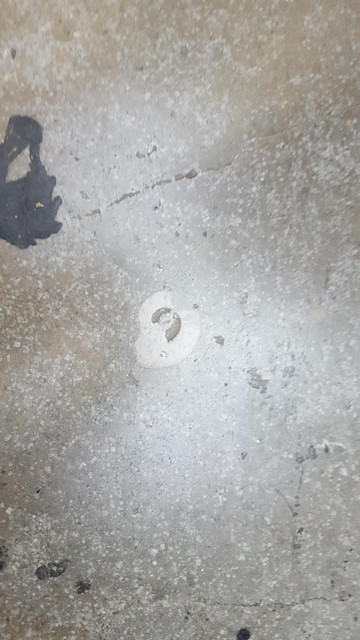
- En la parte trasera de la Catedral encontramos algunos ejemplos de Almejas. Están partidos, por lo que necesitas verlos en perspectivas.
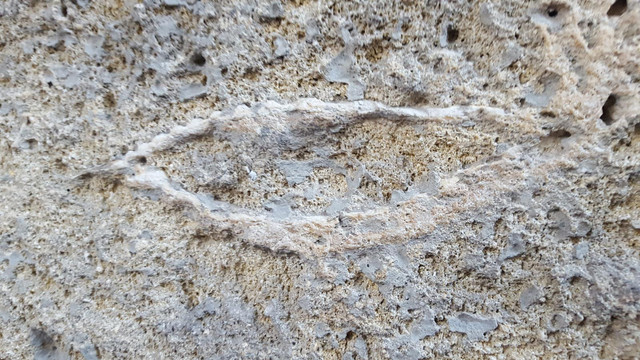
- Frente al Mercado de San Agustín podrás observar algunos Erizos y Percebes. Los primeros se corresponden con las entidades de mayor tamaño. En cuanto a los segundos, son los pequeños puntitos que encontramos alrededor.
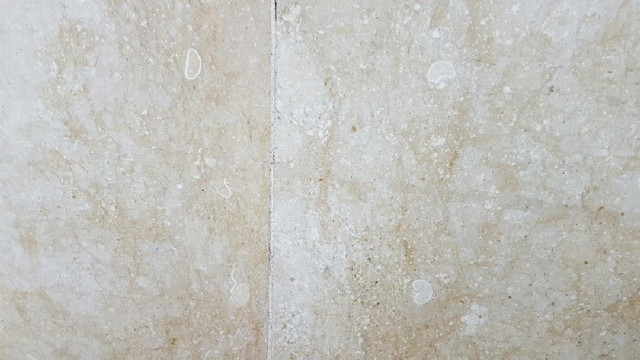
- Por último en la Tienda Mango de la Calle Recogidas. Ammonite y belemnite. Encontrarás gran cantidad de fósiles. Hay que entrar en el local, pero merece la pena. Nada más entrar hay un ammonite gigante. Y a los 2 metros... ¡Un belemnite gigante!
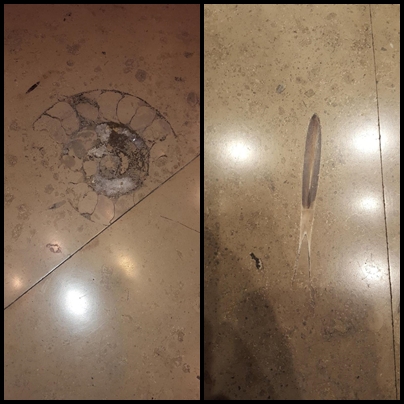
¿Cómo firmo este Earthcache?
Para poder registrar como encontrado este Earthcache es necesario responder de forma correcta a una serie de preguntas. Debes enviar las respuestas correctas al propietario del cache para así poder firmar.
Los registros que contengan respuestas incorrectas o que no envíen las respuestas serán borrados sin previo aviso.
1. ¿Qué es un fósil? ¿Cómo se forma?
2. ¿Qué tipo de fósil estás viendo? ¿Es un fósil de individuo o un registro de actividad?
3. Ahora fíjate en la lista de ejemplos que os mostramos. ¿Cuál es el nombre de este fósil en concreto?
4. Indica por favor cuánto mide el registro fósil en cuestión. Necesitamos que nos des el diámetro en centímetros.
5. (Opcional) Puedes tomar una foto tuya en el lugar. Pero NO MUESTRES EL FÓSIL. NO PUEDES ENSEÑAR EL FÓSIL.
Esperamos que vuestra visita haya merecido la pena. La Tierra es única y nunca deja de sorprendernos. Gracias por venir hasta aquí. Recuerda dejar un registro adecuado. Nosotros hemos puesto mucho esfuerzo en crear esta página para ti. Un saludo.
ENGLISH VERSION
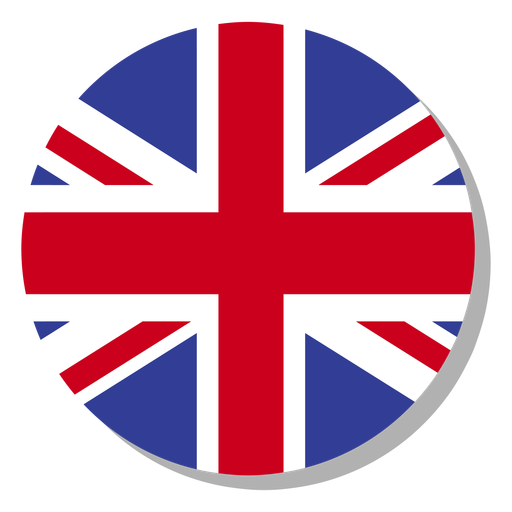
Where is? That I am looking for?
Let's start easy. This is not the only fossil you can find in Granada. The city is an authentic wonderfull place in every way. Geologically too, and there are many fossils that you can find here.
How do you find them? Well, a good way to start ... It's looking your shooes!
What is a fossil?
Fossils are organic remains of plants or animals that lived here millions of years ago. These remains of organisms from past times tend to remain attached to sedimentary rocks and show us how the inhabitants of the Earth were millions of years ago and even what their customs were, thanks to the fossils in which the trace of activity has been recorded.
How are they formed?
There are different possibilities:
• Sedimentation. When an animal or an insect dies, the sediments end up burying its remains, especially its exoskeleton, which is the most resistant to time. In order for this exoskeleton to remain unchanged over millions of years, sedimentation must take place as soon as possible.
• Foundry. This form of fossilization originates mostly molds of negative impressions of organisms. These impressions can be exterior or interior and above all have preserved shells of different animals to this day.
• Mineralization. Water can also preserve a body, for it would be ideal if the living being dies when it falls into the water or already falters in it. Many of the organisms living in the water can eat the outer parts of the body but not the hard skeleton.
• Carbonization. Life is based on carbon, so this is also a form of fossilization. Volatile substances such as oxygen and hydrogen that accumulate in the bodies of living beings are lost and a layer of carbon remains that will be responsible for keeping the remains of the body in the form of a trace.
What types of fossils exist?
We start from the initial basis that fossils are the remains of organisms; animals or plants that last in space time. But we can distinguish two types of fossils:
• Individual fossils. They are those formed by an animal or plant. In most cases they will not be constituted by an entire organism, but a part of it that has been fossilized, such as a bone, blade, jaw or skin.
• Fossils of activity. It is the trace of the activity that living beings have left and it has been maintained until the present in the form of traces or nests printed in different molds, so they are foundry fossils.
Some examples:
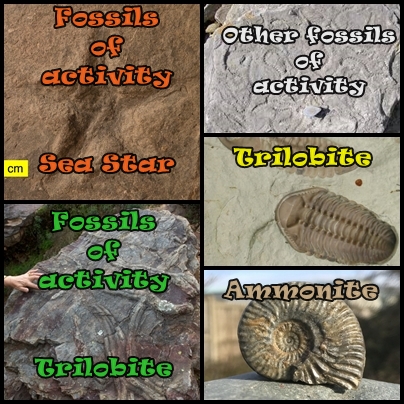
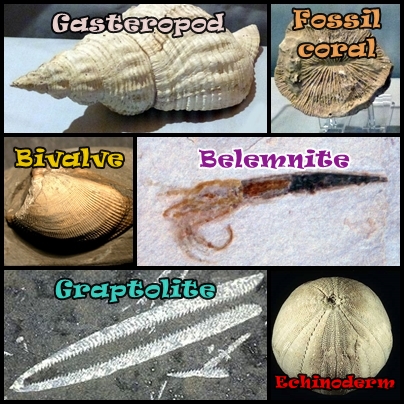
Can I find more in Granada?
Of course, it's almost the first thing we've told you. We have chosen this copy because it is the largest and most visible of all. But there are many other places to observe fossils nearby. Some are part of Earthcaches. And not others.
At the moment the only other tab created is: https://www.geocaching.com/geocache/GC77E8W
If this is not enough for you, you can find some more fossils in the following places:
- On the wall of the Carmelitas Convent, located on Martinez de la Rosa street, you can see small spots of a different color from the wall. Come closer. Yes, they are ammonites!
- On the stairs of the Cathedral, we also find examples of this fossil.

- In the back of the Cathedral we find some examples of Clams. They are split, so you need to see them in perspective.

- In front of San Agustín Market you can see some Hedgehogs and Percebes. The former correspond to the larger entities. As for the seconds, are the little dots we find around.

- Finally in the Mango Store on Calle Recogidas. Ammonite and belemnite. You will find a lot of fossils. You have to enter the premises, but it's worth it. Upon entering there is a giant ammonite. And at 2 meters ... A giant belemnite!

How do I sign this Earthcache?
In order to register this Earthcache as found, it is necessary to answer a series of questions correctly. You must send the correct answers to the owner of the cache in order to sign.
Records that contain incorrect answers or that do not send the answers will be deleted.
1. What is a fossil? How is it formed?
2. What kind of fossil are you seeing? Is it an individual fossil or an activity record?
3. Now look at the list of examples that we show you. What is the name of this fossil in particular?
4. Please indicate how much the fossil record in question measures. We need you to give us the diameter in centimeters.
5. (Optional) You can take a picture of yourself in the place. BUT DO NOT SHOW THE FOSSIL. YOU CAN NOT TEACH-SHARE THE FOSSIL. PLEASE.
We hope enjoy your visit. The Planet Earth is unique. Thanks for coming here. Remember to leave an adequate record. We have put a lot of effort into creating this page for you. A greeting.